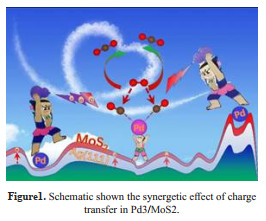Highly efficient, economic, and stable Single-atom Catalyst design: First principles Calculations
Shunfang Li
School of Physics and Microelectronics, Zhengzhou University, Zhengzhou 450001, China
EXTENDED ABSTRACT: Single-atom scale catalysts (SACs) containing isolated metal atom monomers dispersed on appropriate substrates, have recently emerged as a new frontier in catalysis science as endowed with the potential of bridging the gap between heterogeneous and homogeneous catalysis. Contrast to traditional nanoparticle catalysts which usually possess complex geometric structures and diverse active sites, the SACs with well-defined specific local geometric and electronic structures are proven to afford enhanced atom-utilization efficiency, improved active site homogeneity, and the flexible ability to tune the metal support interface with unprecedented control. Such features endow the SACs excellent catalytic activity and high selectivity in a variety of important chemical reactions, such as for the oxygen reduction reaction (ORR), hydrogen evolution reaction (HER), and CO2 reduction reaction. Nevertheless, a major issue that severely limits the practical exploration of SACs is their instability, i.e., due to their high activities, SACs are prone to clustering and sintering during the catalytic processes. Here, using first principles calculation within density functional theory, we present some applicable recipe to stabilize the SAC. For examples, we identify that the synergetic role of charge transfer (see Figure 1) and strain engineering not only significantly enhance the stability, but also considerably improve the catalysis of Pd-SAC on MoS2/Ag(111) and MoS2/Au(111) heterostructures, due to the significantly modulated electronic structures of the defect-free MoS2 overlayer.

REFERENCES
[1] Zhixin Su et al., JMCA 8, 17238 (2020); 2) Ke Zhao, et al., JMCA 7, 9297 (2019); 3) Yandi Zhu et al., ACS Appl. Mater. Interfaces 11, 32887−32894 (2019)
Figure1. Schematic shown the synergetic effect of charge transfer in Pd3/MoS2.

Prof. Shunfang Li got his Ph.D. from the institute of solid state physics, Chinese Academy of Sciences, and a postdoctoral fellow at the University College London and University of Tennessee, Oak Ridge National Laboratory. He is currently a professor and doctoral supervisor in the School of Physics of Zhengzhou University. He has been engaged in the research of quantum materials and quantum energy for a long time, and has published more than 60 papers in high-level academic journals, such as Phys. Rev. Lett